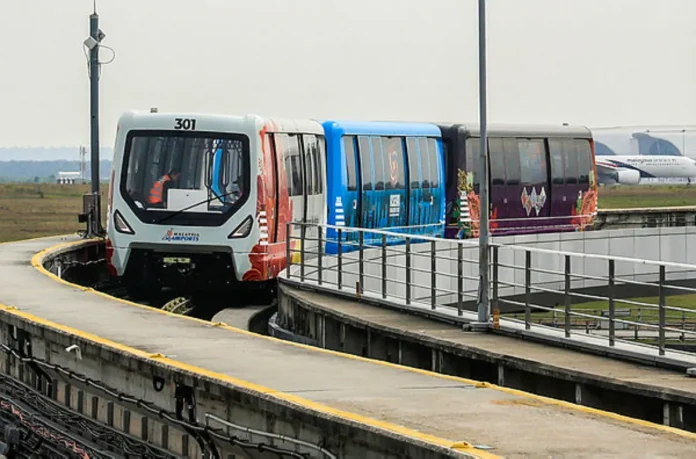Expert says repeated failures show systemic neglect, urges forensic audit and predictive maintenance
PETALING JAYA: Nineteen power failures in less than a year have turned the Kuala Lumpur International Airport (KLIA) Aerotrain from a transport link into a symbol of systemic neglect, exposing critical flaws in power resilience and asset management, said an expert.
Universiti Putra Malaysia Road Safety Research Centre head Assoc Prof Dr Law Teik Hua said the frequency of disruptions points to deep-seated weaknesses that should not be treated as isolated technical glitches.
“It’s not about one-off faults.
It shows underlying vulnerabilities in Aerotrain’s power systems and major gaps in maintenance planning and asset management.”
He explained that the Aerotrain uses the same technology as the automated people movers (APM) operated successfully in major airports worldwide.
“The issue is not the train, but the supporting infrastructure and power resilience behind it.”
He said systems such as the Phoenix Sky Train and Dallas–Fort Worth Skylink achieve more than 99% operational availability through robust maintenance regimes, long-term operations contracts and redundant power systems.
(Redundant power systems are backup or duplicate systems that ensure operations continue even if one component fails).
“These airports treat reliability as a lifecycle commitment, not an afterthought,” Law said.
On whether Malaysia should replace the Aerotrain, Law said any decision must be based on forensic audits and lifecycle cost analyses.
“Replacement is justified when lifecycle, reliability and safety economics no longer favour repair.
“If rehabilitation – such as installing new substations, modern control systems and performance-based maintenance contracts – offers long-term gains at lower cost, then upgrading makes more sense.”
However, he cautioned that if the current system suffers from unfixable single points of failure or obsolete proprietary components, full replacement would be necessary.
He cited the Dallas–Fort Worth Airport (DFW) as an example where authorities opted for targeted modernisation – upgrading vehicles, wayside components and power systems while retaining the guideway – as a cost-effective approach that avoided major passenger disruption.
Law said KLIA’s future APM, whether new or upgraded, must prioritise redundancy and resilience.
He recommended:
dual, physically separated utility feeds and substations to prevent total shutdowns;
automatic transfer switches for clean power switching;
wayside energy storage to enable safe evacuation during blackouts;
onboard batteries allowing trains to move to the nearest station;
redundant current collection systems or third-rail arrangements; and
predictive maintenance systems using IoT sensors and Scada (supervisory control and data acquisition) telemetry.
“These are not futuristic – they are proven resilience measures already in use at airports with high-availability APM systems.”
Law identified several likely vulnerabilities in KLIA’s power network, including a single-point dependency on one substation, limited surge protection, ageing electrical components and poor segregation between critical and non-critical loads.
He warned that even minor faults in maintenance or configuration could escalate into complete power failures.
“A passenger-facing system must never be designed to fail completely.
There should always be a degraded but safe mode of operation that allows evacuation and system recovery.”
In the short term, Law urged Malaysia Airports Holdings Bhd (MAHB) to adopt temporary contingency measures to sustain service and rebuild public confidence.
These include:
deploying continuous shuttle bus loops between terminals;
assigning roving ‘wayfinding’ staff to assist passengers;
providing real-time updates via announcements and mobile notifications;
reinforcing manpower at check-in and transfer counters to help with re-routing; and
preparing clearly marked walking routes and trained guides for emergency evacuations.
He also called for an independent forensic review of the Aerotrain’s installation, testing and maintenance, with the findings made public.
“A transparent remediation plan is critical to rebuild confidence,” said Law.
He emphasised that how airports communicate during disruptions can make or break passenger trust.
“Airports that sustain credibility do three things right.
“They give frequent, honest updates, ensure visible staff presence and offer immediate alternatives for stranded passengers.”











